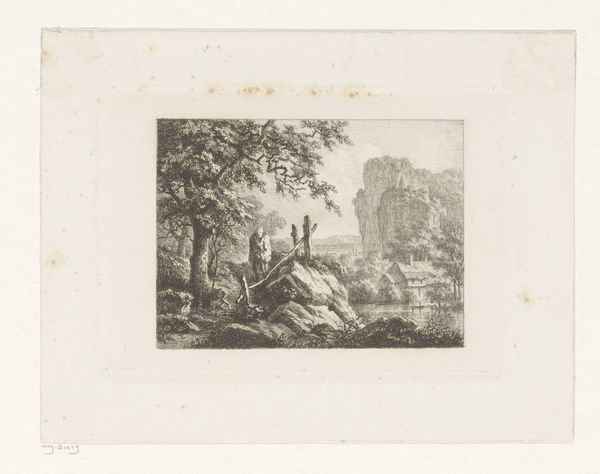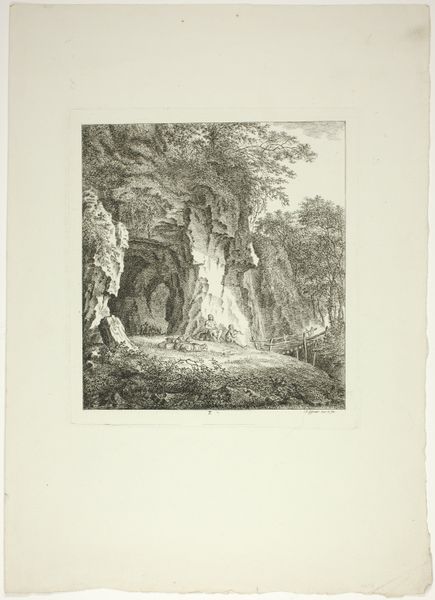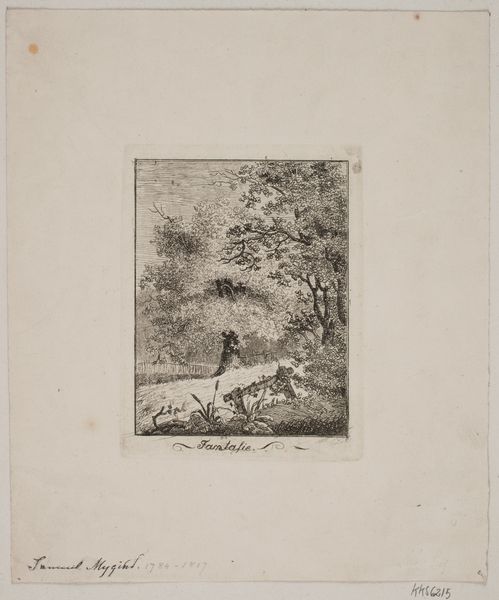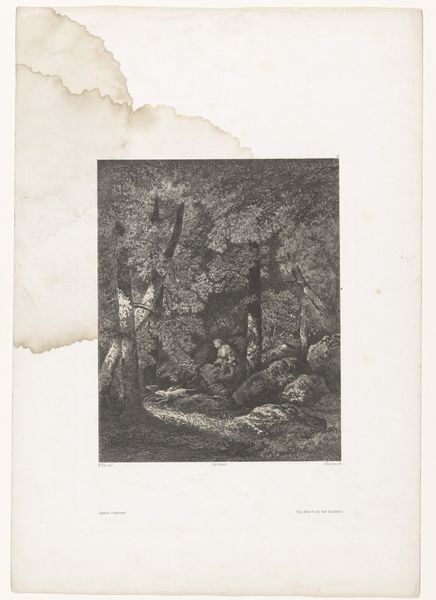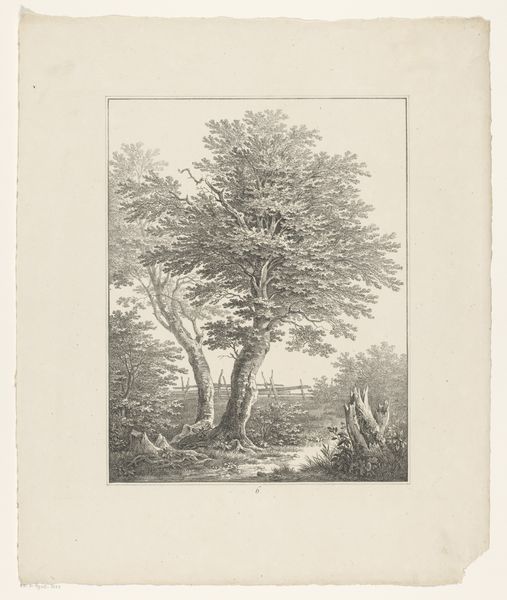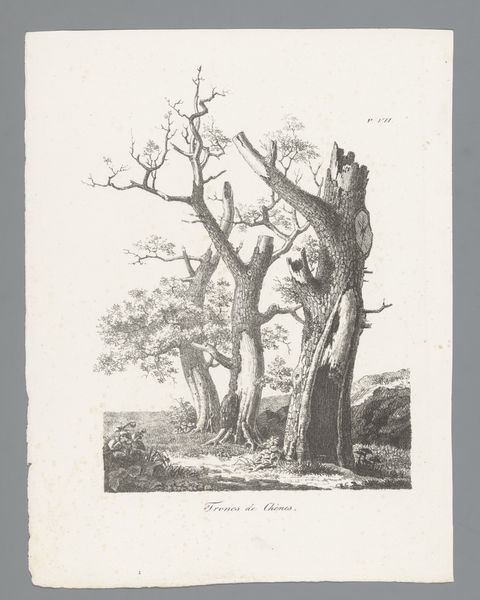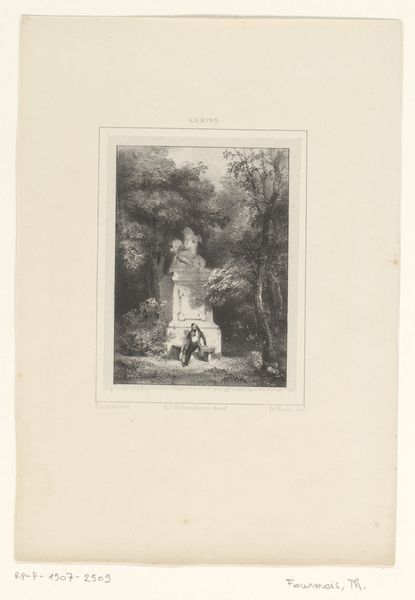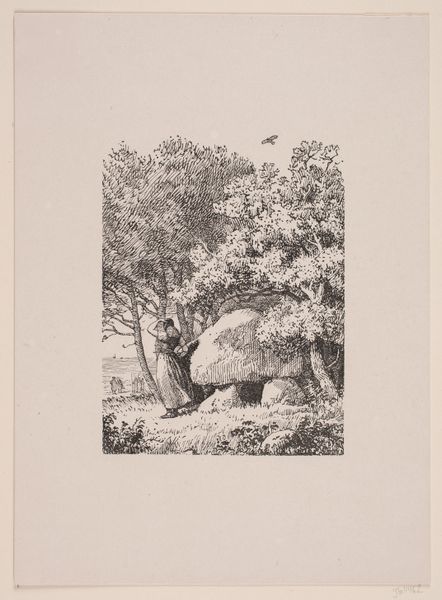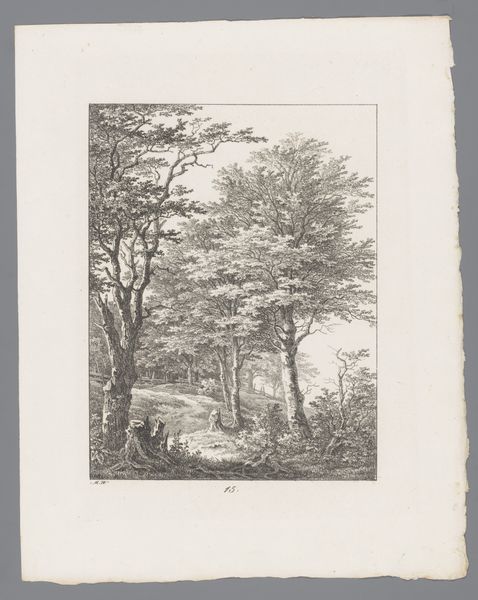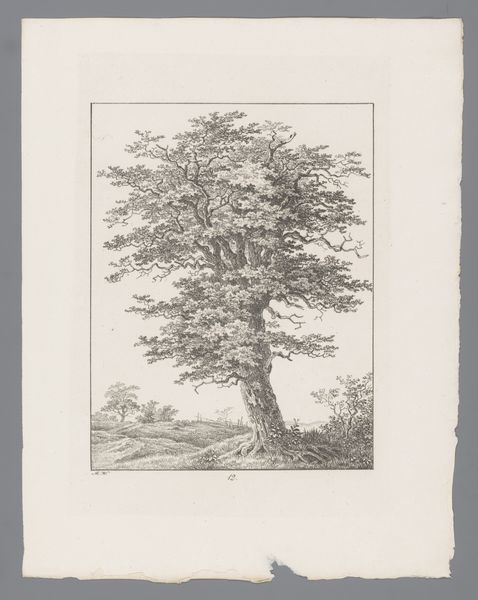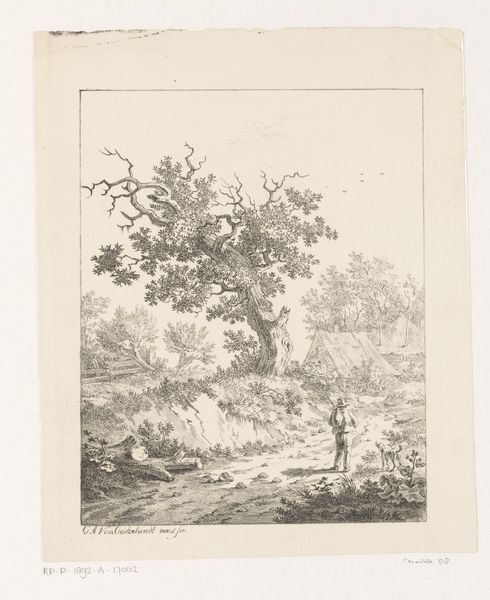
drawing, print, engraving
#
drawing
# print
#
landscape
#
figuration
#
personal sketchbook
#
romanticism
#
history-painting
#
engraving
Dimensions: sheet: 12 5/16 x 8 15/16 in. (31.3 x 22.7 cm) plate: 7 5/16 x 5 1/16 in. (18.6 x 12.9 cm)
Copyright: Public Domain
Curator: Standing before us is Domenico Quaglio the Younger's "Forest Landscape," a work produced between 1795 and 1837. It is currently housed here at the Metropolitan Museum of Art, created through engraving—a fascinating printmaking process. Editor: My initial feeling is one of stillness, a kind of hushed reverence for the old woods. The stark black and white almost feels like looking at a memory, slightly faded, a whisper of a past time. It's got this wistful air. Curator: It's quite remarkable how Quaglio captures this romantic sentiment. The technique of engraving allows for incredibly fine detail, notice the density of the foliage. Think about the labor involved in achieving such texture; it mirrors the experience of slowly gathering resources, cutting away material to finally realize something new. Editor: And you know, seeing that lone figure on the right—a little dwarfed by the surrounding trees—almost puts me right there. Like stumbling into a fairytale or one of those German Romantic poems where you half expect the trees to start whispering secrets. There's something beautifully melancholy about the scene. Curator: That interplay of nature and humanity is so characteristic of Romanticism. These weren’t just idealized landscapes. Artists like Quaglio also used the landscape to show that all aspects of nature—including resources used to create such artwork, and humankind as represented here—are interconnected, like links of a chain to keep our ecosystem and its culture as something inseparable. Editor: It makes me think about how different our relationship with nature is now. It’s far removed from that solitary figure communing with the woods, when one takes nature’s supplies to produce artworks which later represents and communicates that nature. Almost like a ghost image of some possibility that’s now slipped through our fingers. Curator: I agree; its nostalgic tone invites contemplation on change. The tools and labour that brought "Forest Landscape" to life tell a silent story, much like the whispers that you detected, speaking volumes beyond aesthetic surface. Editor: Beautifully said. And it reminds me, maybe that figure in the landscape, they're not lost at all. Maybe they are listening and creating at the same time. It feels like nature’s orchestra never stopped playing its songs and symphonies; only most of us can't hear.
Comments
No comments
Be the first to comment and join the conversation on the ultimate creative platform.


